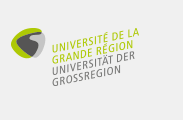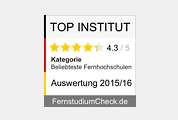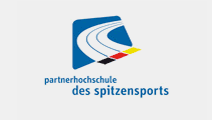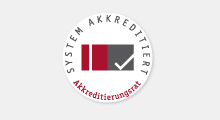Inhaltsverzeichnis:
Algorithmic Accountability
Biological Analyses
Cognitive Science
Complex Network Analysis
Network Literacy

Zum Seitenanfang
Zum Seitenanfang

Zum Seitenanfang
Zum Seitenanfang
Zum Seitenanfang
Algorithmic Accountability
Biological Analyses
Cognitive Science
Complex Network Analysis
Network Literacy
Algorithmic Accountability
Entscheiden über, durch und zusammen mit algorithmischen Entscheidungssystemen

Künstliche Intelligenz(“AI”) beschrieb Alan Turing als “the science and engineering of making intelligent machines, especially intelligent computer programs.”. Heute treffen wir KI in verschiedenen Stadien an, wobei die heute erfolgreichsten verschiedene Techniken des "maschinellen Lernens" implementieren. Die Algorithmen des maschinellen Lernens werden verwendet, um Entscheidungsregeln aus Daten zu abstrahieren, die dann beispielsweise in Entscheidungsbäumen oder neuronalen Netzwerken gespeichert werden (algorithmic decision making; “ADM”). Mit der Zeit verbessert sich das System, indem es aus den Konsequenzen seiner vorherigen Entscheidungen lernt.
Die große Frage des Projekts ist, ob es Grenzen dieser Art von ADM gibt. ADM Systeme werden immer beliebter, insbesondere in den notorisch unterbesetzten Strafjustizssystemen der Welt (im Weiteren: "SJS"). In westlichen SJS, insbesondere denen der USA und in GB, werden diese Werkzeuge in verschiedenen Phasen des Strafrechtsprozesses genutzt, um insbesondere das Rückfälligkeitsrisiko von Angeklagten zu bewerten. In den USA haben sich sogar die großen Menschenrechtsorganisationen wie die ACLU dafür eingesetzt, dass diese Werkzeuge in allen Phasen des Strafrechtsprozesses eingesetzt werden, um mögliche menschliche Vorurteile zu vermeiden.
Diese steigende Popularität von ADM Systemen in SJS zusammen mit den offensichtlich gravierenden Konsequenzen, falls sich die Maschine irrt, macht das Strafjustizsystem zu einem idealen Forschungsthema zur Frage wie Menschen über Menschen entscheiden und wie Maschinen über Menschen entscheiden verglichen damit wie Menschen zusammen mit Maschinen über Menschen entscheiden–aber auch die Grenzen auszuloten, wo Maschinen überhaupt Entscheidungen über Menschen treffen sollten. Damit ist auch die Frage eng verbunden, wie Staaten darüber entscheiden, ob ADM Systeme in ihren Strafjustizsystemen überhaupt verwendet werden sollen.
Die große Frage des Projekts ist, ob es Grenzen dieser Art von ADM gibt. ADM Systeme werden immer beliebter, insbesondere in den notorisch unterbesetzten Strafjustizssystemen der Welt (im Weiteren: "SJS"). In westlichen SJS, insbesondere denen der USA und in GB, werden diese Werkzeuge in verschiedenen Phasen des Strafrechtsprozesses genutzt, um insbesondere das Rückfälligkeitsrisiko von Angeklagten zu bewerten. In den USA haben sich sogar die großen Menschenrechtsorganisationen wie die ACLU dafür eingesetzt, dass diese Werkzeuge in allen Phasen des Strafrechtsprozesses eingesetzt werden, um mögliche menschliche Vorurteile zu vermeiden.
Diese steigende Popularität von ADM Systemen in SJS zusammen mit den offensichtlich gravierenden Konsequenzen, falls sich die Maschine irrt, macht das Strafjustizsystem zu einem idealen Forschungsthema zur Frage wie Menschen über Menschen entscheiden und wie Maschinen über Menschen entscheiden verglichen damit wie Menschen zusammen mit Maschinen über Menschen entscheiden–aber auch die Grenzen auszuloten, wo Maschinen überhaupt Entscheidungen über Menschen treffen sollten. Damit ist auch die Frage eng verbunden, wie Staaten darüber entscheiden, ob ADM Systeme in ihren Strafjustizsystemen überhaupt verwendet werden sollen.
Selected Publications and Press Coverage
Datenspende Projekt

Wenn Sie mit Google suchen, sehen Sie dann die gleichen Ergebnisse wie Ihre Arbeitskollegen, ihre Freunde oder ihre Familie?
Falls nicht, warum ist das so? Personalisiert Google die Suchergebnisse? Wenn ja, nach welchen Kriterien?
Welche Themen haben in den Ergebnissen der Google-Suche und bei Google News Konjunktur, wenn es um die Bundestagswahl 2017 geht?
Es wird viel spekuliert über den Einfluss, den Suchmaschinen auf die Informationen haben, die wir zur Kenntnis nehmen. Tatsächlich wissen wir sehr wenig darüber, wie sie Informationen gewichten und anzeigen. Aber Suchmaschinen sind so zentral für unser Zusammenleben, dass wir eine Möglichkeit brauchen, sie unabhängig zu überprüfen. Das wollen wir mit einem Crowdsourcing-Projekt erreichen, der Datenspende BTW17.
Es wird viel spekuliert über den Einfluss, den Suchmaschinen auf die Informationen haben, die wir zur Kenntnis nehmen. Tatsächlich wissen wir sehr wenig darüber, wie sie Informationen gewichten und anzeigen. Aber Suchmaschinen sind so zentral für unser Zusammenleben, dass wir eine Möglichkeit brauchen, sie unabhängig zu überprüfen. Das wollen wir mit einem Crowdsourcing-Projekt erreichen, der Datenspende BTW17.
Selected Publications and Press Coverage
Zum Seitenanfang
Network Literacy
Zur Zeit nicht in deutsch verfügbar. Siehe englische Version:Network Analysis Literacy

Network analysis literacy is concerned with when to use which method to analyze networks.
The field has seen many methods being proposed in these areas - but not many of them have been evaluated with respect to some ground truth.
We propose that the network analysis community should agree on benchmark data sets and ground truth or gold standard solutions to show that the proposed algorithms
can be tested with regard to their quality.
Selected Publications
- Katharina Anna Zweig: Network Analysis Literacy - A Practical Approach to the Analysis of Networks. Lecture Notes in Social Networks, Springer 2016, ISBN 978-3-7091-0740-9, pp. 3-485
Zum Seitenanfang
Complex Network Analysis
Zur Zeit nicht in deutsch verfügbar. Siehe englische Version:Local Identification of Central Nodes, Clusters, and Network Motifs in Very Large Complex Networks (DFG SPP 1736)

The analysis of complex networks relies mostly on three different approaches:
the identification of central nodes, the assignment of nodes to one or more groups of topologically similar other nodes, so-called clusters,
and the identification of subgraphs occurring more often than expected by chance.
Behind all of these approaches there are at least a dozen functions and measures to instantiate them, which all follow the same logic, which is, however, not always clearly defined.
All of these approaches are today based on methods that make use of global properties of the graph like the distance between all pairs of nodes (O(nm+n^2 log n)),
global ranking of similar node or edge pairs (O(n^2), or the comparison with random graph models of the same structure as the observed one (O(m log m)).
Thus, none of these fundamental approaches can be directly transferred to the analysis of very large complex networks as needed today.
In this project, we will develop a model of local versions of these three approaches, which fundamentally describes how a corresponding measure can be transformed into a local variant of itself. The basic method is to develop algorithms based on graph theoretical reasoning where the algorithm engineering is informed by machine learning to include real-world properties of the data and real-life behavior of hardware. The newly developed measures and models will be put into praxis and their usefullness will be evaluated on big data of RIOT games, a USA-based computer game company.
In this project, we will develop a model of local versions of these three approaches, which fundamentally describes how a corresponding measure can be transformed into a local variant of itself. The basic method is to develop algorithms based on graph theoretical reasoning where the algorithm engineering is informed by machine learning to include real-world properties of the data and real-life behavior of hardware. The newly developed measures and models will be put into praxis and their usefullness will be evaluated on big data of RIOT games, a USA-based computer game company.
One plus one makes three for social networks

In this cooperation with Michael Hanselmann and Fred Hamprecht we explored how much a typical social network platform (like Facebook) can infer about relationships between non-members.
Based on the information of who knows whom on the platform and a list of contacts to non-members we estimate that a platform like facebook can infer about 40% of the connections between non-members.
Selected Publications
- Emöke-Ágnes Horvát, Michael Hanselmann, Katharina Zweig, and Fred Hamprecht: One plus one makes three (for social networks), PLoS ONE 7(4): e34740. doi:10.1371/journal.pone.0034740, 2012.
Press Coverage
- Germany
- heise.de
- SpiegelOnline
- Standard (Österreich)
- DRadio Wissen (Podcast); Interview with Jürgen Kuri (c't, Germany's most renowned computer magazine) on shadow profiles. Here is the direct link to the podcast.
- Scinexx, the online science magazine of Springer
- Press release of the Heidelberg university
- International press:
Zum Seitenanfang
Biological Analyses
Zur Zeit nicht in deutsch verfügbar. Siehe englische Version:Global miRNA analysis

In this cooperation with scientists from the German Cancer Research Center (DKFZ, Heidelberg)
we contributed a new method to analyse noisy biological high-throughput data. In this case, Özgür et al.
were interested in the influence of so-called microRNAs on the level of certain proteins. These proteins regulate the
cell cycle in a very malicious breast cancer type. Since microRNA regulation is in general very mild, it is difficult to
decide whether a given change in a protein's level is for real or just a random fluctuation. We attacked this problem
by assessing the statistical significance of co-regulations, i.e., we checked whether pairs of proteins where
significantly often co-regulated by microRNAs.
Selected Publications
- Stefan Uhlmann, Heiko Mannsperger, Jitao David Zhang, Emöke-Ágnes Horvát, Christian Schmidt, Moritz Küblbeck, Frauke Henjes, Aoife Ward, Ulrich Tschulena, Katharina Zweig, Ulrike Korf, Stefan Wiemann, and Özgür Sahin: "Global microRNA level regulation of EGFR-driven cell-cycle protein network in breast cancer", Molecular Systems Biology 8:569, doi: 10.1038/msb.2012.2, 2012
Press Coverage
- The article was featured on nature.com and accompanied by a 'news and views' article by Marcos Malumbres
- Press release of the Heidelberg university
- Nationales Genomforschungsnetzwerk
Zum Seitenanfang
Cognitive Science
Zur Zeit nicht in deutsch verfügbar. Siehe englische Version:Understanding human navigation in complex networks

Cognitive science is one of the upcoming themes in my work group. A first project in that direction was conducted together with
Sudarsan Iyengar and his colleagues on human navigation in complex networks.
In this cooperation we worked on analyzing how people learn to navigage in a highly abstract, word-based network.
Selected Publications
- Sudarshan R. Iyengar, K.A. Zweig, Abhiram Natarajan, and C.E. Veni Madhavan: "A network analysis approach to understand the human-wayfinding problem", Proceedings of the 33rd annual meeting of the Cognitive Science Society, 2011
Press Coverage
- RNZ (local newspaper)
- Psychologie aktuell
- Article in the journal of the Heidelberg university
- Press release of the Heidelberg university
Zum Seitenanfang


![[Logo des FB Informatik]](/logos/logo_fbi_167x60.png)




